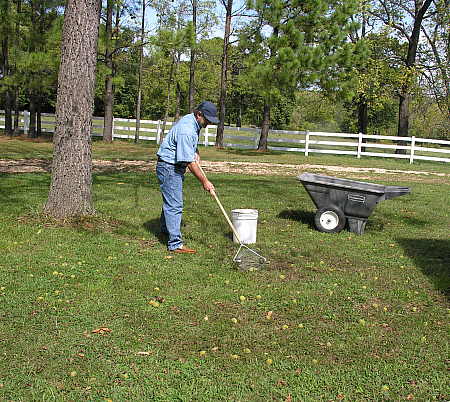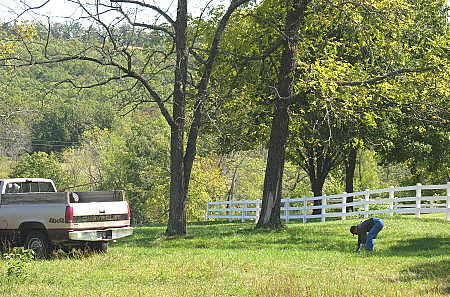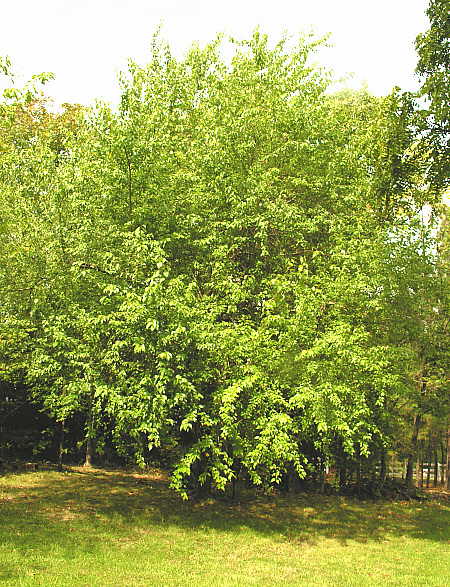
This is a tree with various names. Some refer to it as the bois d’arc (pronounced “bodark”), which is french for “bow wood.”  It is also referred to as an Osage orange tree, hedge apple tree, and horse apple tree. All of these monikers have a basis in the properties of the tree, as we shall see in the following paragraphs. Some people dislike these trees, while others adore them, depending upon their perspectives.
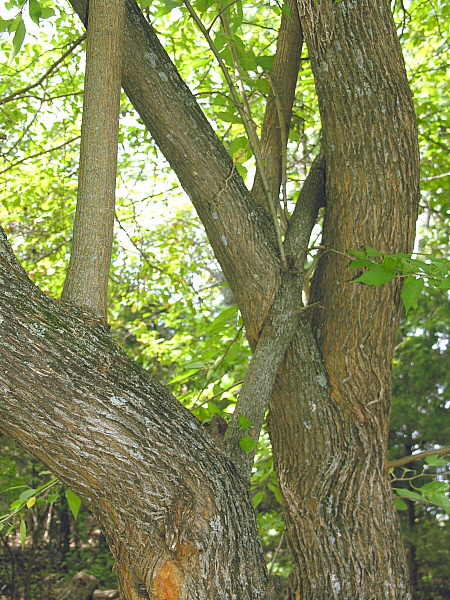
The picture above is a trunk of a bois d’arc tree. The wood of this tree is extremely hard and tough, which makes it a sought after tree for cutting into fence posts. But if you intend to cut one of these trees, you had better arm yourself with plenty of sharp chains on your chainsaw, as the tough, yellowish wood of the bois d’arc will dull the chain rapidly. It is also advisable to wear long sleeves made of thick fabric, as the spines on the branches can cause painful lacerations if you are not careful.
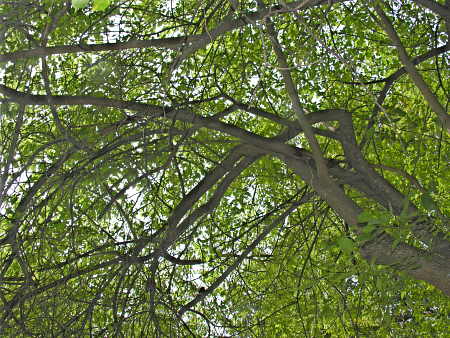
The canopy of the bois d’arc forms a tangled mass of branches, which are armed with stout, flesh-piercing barbs. Because of the dense mass of resilient, barbed and tough wood that the tree produces, it was planted with tight spacing as a hedge row in times prior to the invention of barbed wire. It is referred to as being “horse high, bull strong, and hog tight,” an ideal specification for a farmstead hedge row. Because of the toughness and decay resistance of the wood, combined with the long, straight, resilient branches that this tree produces, it was prized as a source of wood in which to construct bows in the past, hence it’s name bois d’arc tree, or bow wood tree.
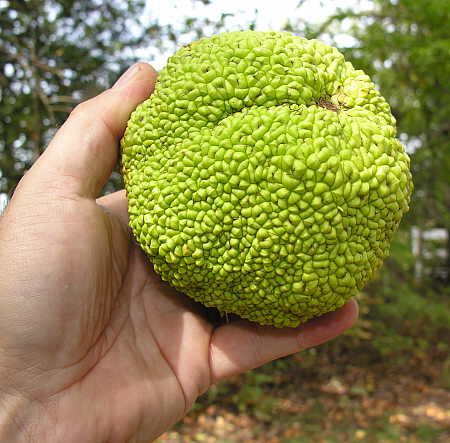
This is the fruit produced by the bois d’arc. Some call this the Osage orange, possibly because the skin emits a citrus-like scent when it begins to rot. Because the trees were often grown as a hedge, the fruit has been called a “hedge apple” by some. Because the fruit is consumed by horses, it is termed a “horse apple” by others. Osage orange, hedge apple, or horse apple, it remains that humans do not consume this fruit. But, as just mentioned, horses eat the fruit of the bois d’arc tree, as well as squirrels and cattle.
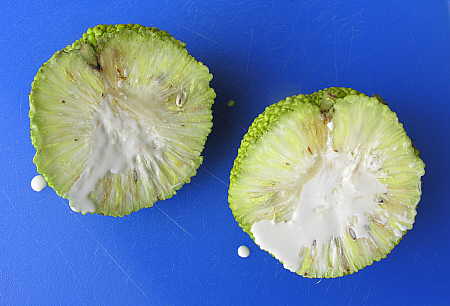
If you slice the fruit in half, which requires a stout knife, as the fruit is quit hard until it begins to rot, you will find that after a minute or two the fruit begins to “weep”, as you can see in the photograph above. Only the female tree produces the fruit, which propagates the tree through the germination of the approximately 200 seeds contained within the fruit. In the fall, the fruit begins to drop from the limbs of the tree, and when they do, watch out, as it hurts to be struck by the falling, heavy, hard fruit of the Osage orange, or bois d’arc tree.



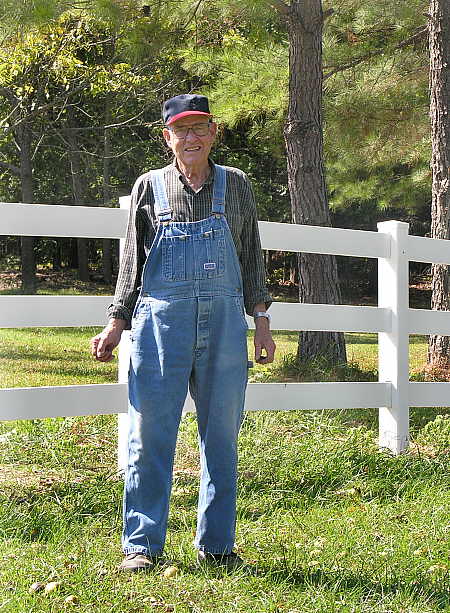 Â
 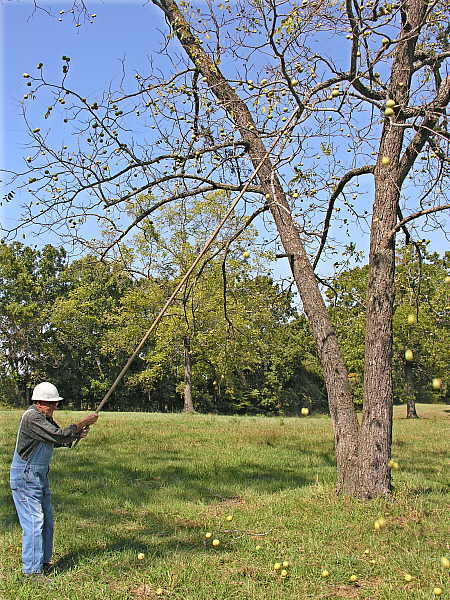 Â
 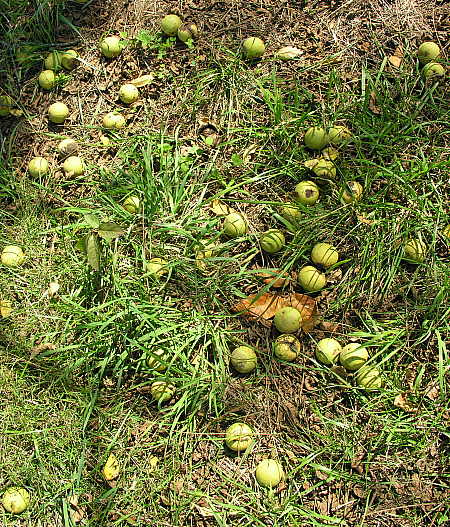 Â
 